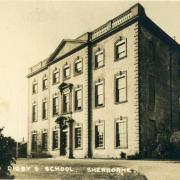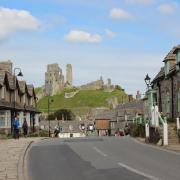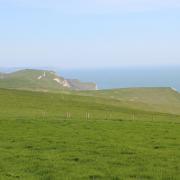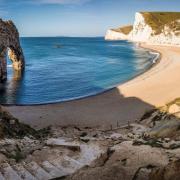How can you to find out about the lives of your seafaring ancestors and those who emigrated overseas? Katie Heaton, Local History Librarian at Poole Museums shares the best resources for tracking down the family history of those who went to sea
My ancestor was in the Merchant Navy: Searching for information about people employed on ships is not straightforward, you may need to consult different records housed in various locations. However, potentially you will be able to piece together the story of your ancestor’s life at sea. The National Maritime Museum has a series of comprehensive guides at rmg.co.uk/collections (click on Library and Archive Collections), which take you through many of the resources that are available. We’ll explore some of the records which are signposted, and highlight what might be available locally.
Exploring crew lists: The Crew List Index Project (CLIP) crewlist.org.uk is described as, ‘a not-for-profit volunteer project, set up to assist research into the records of British merchant seafarers of the late 19th and early 20th century.’ CLIP have worked with archives around the world to establish the largest database of seafarers' records. There are several options on the site; some specific help sections and, if you scroll down, you reach all the resources which are available to search.
Augustus Martin, born in Poole in 1828, can be found by searching seafarers. He appears on the crew of three ships: Humility, Maria and John Pierce. The Crew List website is vast and detailed, so you will need to spend time exploring the site and different search functions.
If you have access to Ancestry (ancestry.co.uk), then there are several resources to investigate. For example, under Dorset, England Crew Lists,1863-1914, a search for Augustus Martin results in 26 records of crew lists that he was part of, so you can trace his career through the years and ship by ship.
The first result, the crew list of the Heroine in 1868, reveals that Augustus travelled from Poole to Labrador and back to Poole. The crew list also divulges information about Heroine, the ship was owned by Thomas Wanhill of Market Street, Poole and the Master was Henry Taylor of Parade, Poole.

Using local resources for extra value: Remaining with the Heroine, I used some of our local resources at Poole History Centre to find out about individual ships. This may be a search that can be duplicated in other local history centres. Starting with the website poolehistory.org.uk , I was able to find a Ship Portrait of Heroine. Though this may not be the same Heroine that Augustus travelled on, it does give an idea of what ships at the time looked like.
Within Poole History Centre we have a local ship index, which is where I found: ‘Heroine, Ship portrait of schooner John Dean master entering Leghorn 14.10.1833, signed Michel Renault. 1864 & 1866 Owner Thos Wanhill, Poole.’ This additional information suggests that the portrait is the ship that Augustus Martin worked on. This local information adds a great deal, even an image, so it is worth consulting the resource which is local for your ancestors.

Discovering Lloyd’s Lists: Begun by Edward Lloyd, the proprietor of Lloyd's Coffee House, Lloyd’s Lists have provided shipping bulletins in London since 1734. The List is ‘a reliable and concise source of information for the merchants' agents and insurance underwriters who met regularly in his establishment in Lombard Street to negotiate insurance coverage for trading vessels.’ It is still in use today, in a regularly updated digital format. There are numerous Lloyd’s Lists online and free to search - by port, ship, or master maritimearchives.co.uk (click on Lloyd’s List down the side panel). It begins in 1741 and goes up to 1826, so covers an earlier period compared to the crew lists on Ancestry.
Lloyd’s Register Foundation is another potential source of information; the website is a good place to browse hec.lrfoundation.org.uk (select Archive & Library from the top bar) which is also where you will find a searchable Lloyd’s Register of ships.
The National Archives has produced guides to their maritime resources, they are always worth searching too nationalarchives.gov.uk (click on Help with your Research and select Military and Maritime).
Local newspapers are also valuable when researching shipping and seafaring family. In Poole History Centre extracts from the Salisbury Journal have been digitised and added to poolehistory.org.uk. We’ve looked at various places to start searching for your seafaring ancestors, but what about those who crossed seas for a new life?

A new life overseas: For centuries, people have been moving around the globe in search of a different life. So, if your ancestor was one of these, here are some places to uncover more about their story.
If you can, begin with an approximate date of when your ancestor emigrated and where they went. This will help to focus your search. Another key piece of information is their place and estimated date of birth. According to The National Archives, millions of people emigrated from Britain over the last 400 years, the largest number going to the USA, Canada, New Zealand and South Africa. Records of British migrants to these countries form the primary focus for their guide (nationalarchives.gov.uk). This is a great place to begin and gain an insight into some of the other resources available.

Another useful list of websites can be found at familysearch.org (click on blog at the bottom of the page and then in the search box type find immigrant ancestors). This highlights some valuable places to search and links to further informative articles.
I followed the emigration journey of a Poole family through the records, mainly using the Ancestry website, to see what I could discover.
On 21 September 1887, Edmund Tom James Wills was baptised at St. James Church. His parents were Tom James Wills, an engineer, and Maria Caroline Wills (nee Stone). Two years later Tom James died aged 27. In 1891 the family were living in Lagland Street. Edmund has two sisters, Cordelia, and Daisy.
Although I can’t find them on a passenger ship, the next time we see the family is in 1901 in Canada. Records suggest that they emigrated between 1894 and 1895. Why Maria, a young widow with three small children, decided to make this perilous journey across the ocean, we will never know. But by 1901 she has remarried and is now Caroline Bianculli, living in Halifax, Nova Scotia, and she has had three children with her new husband.
The New York State Census of 1905 records the Biancullis in the Elmira district, and this is where they settle. Maria Caroline Wills is now Carrie Biancullis and 18-year-old Edmund is known as Eddie. The detailed USA and New York census returns allow us to track a great deal of the family’s lives. This small part of the story of Caroline Biancullis, her epic trip and eventual life in New York, highlights the wealth of resources available for tracking your emigrant ancestors.

Forced Emigration: There are also resources available to find ancestors who were forced to emigrate. Library and Archives Canada records states: ‘Between 1869 and 1932, over 100,000 children were sent from Britain to Canada through assisted juvenile emigration. These migrants are called “home children” because most went from an emigration agency's home for children in Britain to its Canadian receiving home. The children were placed with families in rural Canada.’ The website provides a comprehensive list of sources and places to find out more bac-lac.gc.ca (click on Search the Collection and select Ancestors).
Using information from local researcher, Charlie Lord, it is possible to track a Poole boy to his new life in Canada. ‘In March 1881 the brig George had been driven onto the sands at Torquay. The mate of the ship, Frederick Head, was involved in efforts to get the ship back underway when he was hit by one of the revolving arms of the capstan. He was ‘dealt a tremendous blow’ and taken to hospital, where he died two days later. The Poole Telegram finished its account by saying that, ‘he leaves a widow and five children, who reside at Baiter.’ His widow Caroline (born Caroline Elizabeth Saunders), was 40 years old in 1881, and before marrying Frederick in 1868 she had worked as a servant in Longfleet. When Frederick died, she was pregnant with their sixth child. By 1890 two of the six siblings and Caroline, had also died. One of the remaining children, Sidney Head, age about 11 in 1890, left for Canada in 1892 on board the Carthaginian with Barnardo Homes. One man, Mr Owen travelled with 303 children. We next find Sidney on the 1921 Canada census living with his wife and child in London, Ontario.
I hope that the information provided here gives you a starting point to delve deeper into the lives of your seafaring ancestors and continue to add life and colour to your family stories.
Click here to find out about how to trace your ancestors during the two World Wars
Research your Poole ancestors: Poole History Centre, part of Poole Museum, is open Wednesday to Saturday 10am-1pm, by appointment only (localhistory@bcpcouncil.gov.uk or call 01202 128888). Staff can advise on research methods and sources of additional information. It is advisable to book microfilm machines and computers. Poole History Online is a free to use website containing thousands of photographs and documents relating to the town’s history poolehistory.org.uk, it is also where you can read Katie's blog Beginning Your Family History (click From Home, then Family History).




























